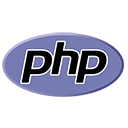Code generation is a powerful technique that allows you to create and modify PHP code dynamically. In this guide, we'll explore advanced PHP code generation techniques and provide sample code examples.
1. Introduction to Code Generation
Code generation involves creating or modifying source code programmatically. This technique is used for various purposes, including scaffolding, ORM tools, and more.
2. Key Concepts and Techniques
2.1. Reflection API
The Reflection API allows you to inspect and interact with classes, methods, and properties at runtime. It's a fundamental tool for code generation.
2.2. Abstract Syntax Tree (AST)
PHP 7 introduced the AST extension, which enables parsing and manipulating PHP code as an abstract syntax tree. This is useful for creating and modifying code dynamically.
2.3. Template Engines
Template engines like Twig and Blade can be used for generating code from templates. These engines provide a clean and organized way to create code dynamically.
2.4. Code Generation Libraries
Various PHP libraries, such as the PHP-Parser library, provide tools and APIs for code generation. These libraries simplify the process of generating PHP code.
3. Example: Generating PHP Code with the Reflection API
Here's a simplified example of generating PHP code using the Reflection API:
// PHP code generation with the Reflection API
class MyClass
{
public function greet($name)
{
echo "Hello, $name!";
}
}
$reflectionClass = new ReflectionClass('MyClass');
$method = $reflectionClass->getMethod('greet');
$params = $method->getParameters();
$generatedCode = 'function ' . $method->name . '(';
foreach ($params as $param) {
$generatedCode .= '$' . $param->name . ', ';
}
$generatedCode = rtrim($generatedCode, ', ');
$generatedCode .= ') { ';
$generatedCode .= 'echo "Hello, " . $name . "!"; }';
echo $generatedCode;
?> 4. Conclusion
Advanced PHP code generation techniques are essential for creating dynamic and flexible applications. These techniques can be used for generating database schemas, creating custom code scaffolding, or modifying code at runtime.

